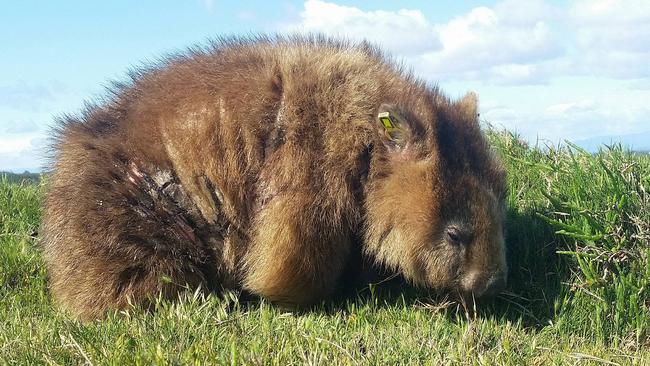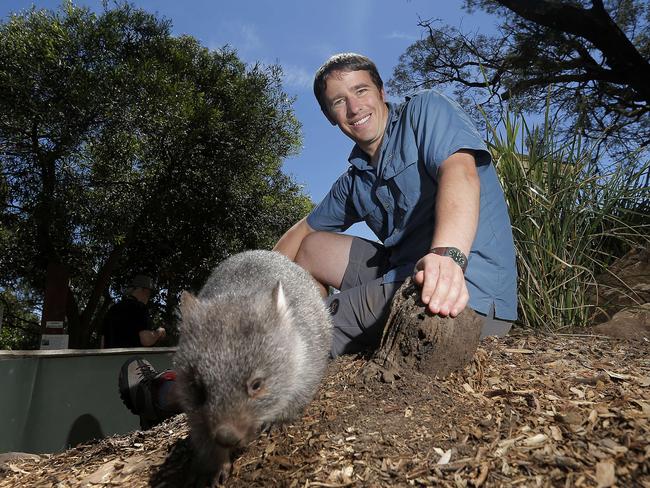Wombat wipeout fears grow after outbreak of sarcoptic mange
A DEADLY disease sweeping through populations of wombats had the potential to rival the devastation caused by the devil facial tumour disease, an expert warns.

Tasmania
Don't miss out on the headlines from Tasmania. Followed categories will be added to My News.
A DEADLY disease sweeping through populations of wombats had the potential to rival the devastation caused by the devil facial tumour disease, an expert on the native marsupial says.
An outbreak of sarcoptic mange in the Narawntapu National Park has killed all but a handful of wombats in the area since 2009.
University of Tasmania wildlife ecologist Scott Carver said it was not known what was causing the outbreak or how far the disease had spread, but it had the potential to devastate wombat numbers statewide.
“Sarcoptic mange is the number one disease of wombats nationally,” he said,
“Unfortunately there is a real lack of good wombat population monitoring to be able to document how much it’s affecting the population.”
The outbreak in the Narawntapu National Park near Bakers Beach in the North-West had killed upwards of 95 per cent of the local wombats, Dr Carver said.
“It’s been catastrophic for that population.
“We can say anecdotally there appears to be a regional outbreak of mange affecting populations around the central northern areas of the state.”

Dr Carver is leading a team of three researchers from the University of Tasmania trying to better understand and manage the extent and impact of sarcoptic mange on local wombat populations.
“There’s a range of things we need to do and that we are doing. We’re working on ways to control this disease – which is very challenging in wild populations, delivering disease control effectively,” he said.
Legislative Council member Kerry Finch said he was alarmed by the spread of the disease and called for urgent action.
“The Tasmanian Wildlife Rehabilitation Council ... says while there has been no government funding provided, nor survey data sought by authorities as to the impact of mange on wombats, anecdotally, tourists are appalled at the suffering they see on travelling around Tasmania,” he said.
“The council says there is evidence of widespread infestation and wombat suffering and fatality in the North-East and East and South of the state, through the Midlands, in and around Cradle Mountain and Lake St Clair National Parks, the Burnie hinterland and on Flinders Island.”
People wishing to help the research effort can do so through the University of Tasmania Foundation and by reporting wombat sightings to womsat.org.au.


